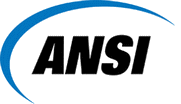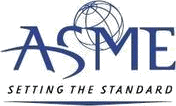ANSI B16 or ASME B16 or both?


ASME B16.5
Pipe flanges and flanged Fittings NPS 1/2 through NPS 24 Metric/Inch standard
HISTORY - (FOREWORD ASME B16.5-2009)
In 1920, the American Engineering Standards Committee (later the American Standards Associations (ASA)) organized Sectional Committee B16 to unify and further develop standards for pipe flanges and fittings (and later for valves and gaskets).
Cosponsors of the B16 Committee were ASME, the Heating and Piping Contractors National Association (now Mechanical Contractors Association of America (MCAA)), and the Manufacturers Standardization Society of the Valves and Fittings Industry (MSS). Cosponsors were later designated as cosecretariat organizations.
The Committee soon recognized the need for standardization of steel pipe flanges. In May, 1923, Subcommittee 3 was organized to develop such standards for pressures in the 250-psi to 3,200-psi range and for elevated temperatures. Active work began in October, including steel flanged fittings. The first proposed standard was submitted to the Committee in April 1926 and approved by letter ballot in December.
After favorable review by the three sponsor organizations, the Standard was approved as American Tentative Standard B16e in June 1927.
Experience in using the Standard showed the need for hub dimensions of companion flanges and for other changes, including rerating of 250-lb and 1,350-lb flanges and development of flanged fittings with integral bases. An investigation was made into the factors determining stiffness of flanges and flange hubs. The revised edition was approved as ASA B16E-1932.
A revision was initiated in 1936, stimulated by suggestions from Committee members and industrial users. The resulting 1939 edition contained standards for welding neck flanges (completed in March 1937), 1,500-lb flanges in the 14-in. through 24-in. range, 2,500-lb flanges and flanged fittings in the 1/2-in. through 12-in. range, and dimensions for a full line of ring joint flanges developed by the American Petroleum Institute. Pressure-temperature ratings for alloy steel flanges and fittings, developed by Subcommittee 4, were included for the first time.
In August 1942, the War Production Board requested a review of measures to conserve vital materials in piping components. A special War Committee of B16 was appointed and, operating under War Standard Procedure, developed revised pressure-temperature ratings for all materials and pressure classes. The ratings were published as American War Standard B16e5-1943. In 1945, under normal procedures, Subcommittees 3 and 4 reviewed the 1939 standard and 1943 ratings and recommended adoption of the wartime ratings. Their report was approved as Supplement No. 1 to B16e-1939 and published as ASA B16e6-1949. In addition to ratings, the supplement updated material specification references and added a table of metal wall thickness for weldingend valves.
Subcommittee 3 then began a revision of the entire standard. Technically, the 1949 Supplement was absorbed, new materials were recognized, a general rating method was developed and added as an appendix, and welding end preparations were expanded. Editorially, a new style of presentation was worked out, including tables rearranged for easier use. Approval by Sectional Committee, cosponsors, and ASA resulted in the publication of ASA B16.5-1953 (designation changed from B16e).
Work soon began on further revisions. Class B ratings were deleted, and Class A ratings were clarified as the standard. An appendix defined qualifications for gaskets, other than ring joint, which would merit the ratings. Another appendix defined the method for calculating bolt lengths, including the measurement of stud bolt length between thread ends instead of points. Pressure-temperature ratings for several new materials were added, the table of welding end dimensions was expanded, and the temperatures used in determining ratings were redefined. The resulting new edition, after approval, was published as ASA B16.5-1957.
The more modest revision approved as ASA B16.5-1961 changed the text to clarify the intent or to make requirements easier to administer. The next revision began in 1963 with nearly 100 comments and suggestions. No fundamental changeswere made, but the textwas further clarified, and wall thicknesses less then 1/4 in. for flanged fittings were recognized in the 1968 edition. A new joint study of ratings between Subcommittees 3 and 4 was initiated before the next revision. Based on the Subcommittee 4 report, the rating procedure was revised, and a rating basis for Class 150 (150 lb) flanges was developed. New product forms, bar and plate, were added for special applications, including fabricated flanged valves and fittings.
Reference to weldingend valves was not included, because a separate standard for them was. Bolt length calculations based on worst case tolerances led to a revision of tabulated lengths. Testing of valves subsequently published by SC 15 closure members was added to the test requirements. Following final approval on October 23, the Standard was published as ANSI B16.5-1973.
Subcommittee N (formerly 15) was assigned responsibility for all valve standards in late 1973. Subcommittee C (formerly 3) continues to have responsibility for flange standards. A revision was accordingly initiated to remove all references to valves. At the same time, comments from users and changes in the ASME Boiler and Pressure Vessel Code led to significant revisions in the Class 150 rating basis and in the ratings of stainless steel and certain alloy steel flanges and flanged fittings in all rating classes.
Extensive public review comments led to the addition of considerations for bolting and gaskets for flanged joints and of marking requirements. To avoid frequent and confusing changes in ratings as further changes in Code allowable stresses are made, it was agreed with Subcommittee N to leave ratings alone unless the relevant Code stress values are changed by more than 10%. After final approval by the Standards Committee, cosponsors, and ANSI, ANSI B16.5-1977, Steel Pipe Flanges and Flanged Fittings, was published on June 16, 1977.
In 1979, work began on another new edition. Materials coverage was expanded by the addition of nickel and nickel alloys. Bolting rules were revised to cover nickel alloy bolts. Bolt hole and bolting were changed to provide interchangeability between inch and metric dimensions. Metric dimensional tables were made informational rather than alternative requirements of the Standard. Final approval was granted for ANSI B16.5-1984, Pipe Flanges and Flanged Fittings on August 14.
In 1982, American National Standards Committee B16 was reorganized as an ASME Committee operating under procedures accredited by ANSI. The 1988 edition of the Standard extended nickel alloy ratings to higher temperatures, clarifying flat face flange requirements, and included other minor revisions. The Committee determined that any metric standard for flanges will stand alone, with metric bolting and gaskets; hence, metric equivalents have been deleted.
FOLLOWING APPROVAL BY THE STANDARD COMMITTEE AND ASME, APPROVAL AS AN AMERICAN NATIONAL STANDARD WAS GIVEN BY ANSI ON APRIL 7, 1988, WITH THE NEW DESIGNATION ASME/ANSI B16.5-1988.
The 1996 Edition allowed flanges marked with more than one material grade or specification, revised flange facing finish requirements, revised pressure-temperature ratings for several material groups, added a nonmandatory quality system annex, and included several other revisions.
THE 1996 EDITION WAS APPROVED BY ANSI ON OCTOBER 3, 1996, WITH THE NEW DESIGNATION ASME B16.5-1996.
The 2003 Edition included metric units as the primary reference units while maintaining U.S. Customary units in either parenthetical or separate forms. New materials were added while some materials were shifted from one group to another, and new material groups were established. All pressure-temperature ratings were recalculated using data from the latest edition of the ASME Boiler and Pressure Vessel Code, Section II, Part D.Annex F was added to cover pressure-temperature ratings and dimensional data for Class 150 through 2500 flanges and Class 150 and 300 flanged fittings in U.S. Customary units.
Table and figure numbers in Annex F were prefixed by the letter F and corresponded to table and figure numbers in the main text for the metric version, with the exception of some table and figure numbers that were not used in Annex F. Of note, the flange thickness designations for Class 150 and 300 were revised with reference to their raised faces.
For these classes, the flange thickness dimensional reference planes were altered; however, required flange thickness remained unchanged. The minimum flange thickness designation was changed from C to tf, and it did not include 2.0 mm (0.06 in.) raised face for Class 150 and 300 raised face flanges and flanged fittings. Because of diminished interest, flanged end fittings conforming to ASME Class 400 and higher were listed only with U.S. Customary units in Annex G.
In addition, straight hub welding flanges were incorporated as a new set of flanges in Classes 150 through 2500. Also, there were numerous requirement clarifications and editorial revisions.
Following the approval of the Standards Committee and ASME, approval for the new edition was granted by the American National Standards Institute on July 9, 2003.
The 2009 Edition adds new materials, updates some pressure-temperature ratings, and designates the annexes as mandatory and nonmandatory appendices. The mandatory appendices have been numbered using roman numerals, and the nonmandatory appendices are now referenced using capital letters. Following approval of the Standards Committee and ASME, approval for the new edition was granted by the American National Standards Institute on February 19, 2009.
